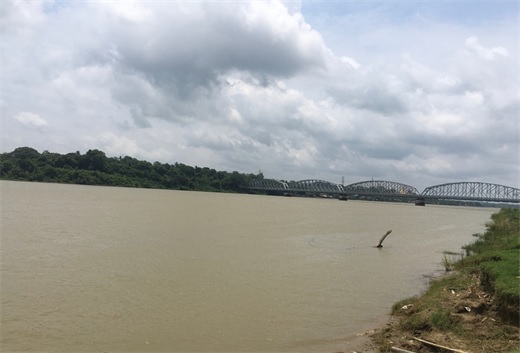First community-based fish conservation zone designated in the Sittaung River, Myanmar
The Sittaung is one of Myanmar’s four largest river systems, flowing from central Myanmar to the Gulf of Mottama. The gulf’s dynamic ecosystems support important fish populations, particularly diadromous fish species such as Hilsa shad and Pama croaker that migrate between freshwater and seawater.

In 2021, a survey by Fauna & Flora International (FFI) identified key spawning grounds in the Sittaung that should be protected to boost fish stocks. Through an FPIC approach, IUCN and the Myanmar Coastal Conservation Lab (MCCL), a local youth conservation group, organized consultations in 12 villages in 2023 and early 2024 to identify sites with the local interest, leadership, and social cohesion needed to establish community managed fish conservation zones (FCZs).
A potential FCZ was located next to the Sittaung Bridge (Thein Za Yat) in Waw Township, Bago Region, is 300 m wide. It lies in the village tract of Ta Naw Kyun, which consists of three villages, Ta Naw Kyun, Moe Gyoe Gone and Kyauk Nyat, where most of the households are highly dependent on fishing.
During the consultations, local fishers expressed their interest in establishing an FCZ. Rather than a seasonal closure, they strongly preferred a strict no-take FCZ that allows them to continue fishing outside the FCZ. A Local Fisher Group (LFG) was formed with 57 members to establish a 10-hectare FCZ. A 7-member management committee was formed to develop a management plan and lead the application process.
To formally designate the FCZ, the management committee applied to the Bago Regional Government, which is mandated under the 2018 Bago Region Freshwater Fisheries Law to approve FCZs upon the recommendation of the Regional Department of Fisheries (DoF). On 22 April 2024, DoF recognized the FCZ with a 300-m buffer zone for community patrolling.
To sustain the FCZ, IUCN deposited $5,000 in a local bank. This generates a modest but guaranteed income that the management committee uses to support FCZ management and operational costs. The LFG is responsible for demarcating the FCZ, collecting fish catch data, and organizing regular community meetings to assess FCZ effectiveness.
Since this is the first FCZ on the Sittaung that has been officially recognized, it is important to monitor its impact with a view to replicating the model elsewhere. The experience highlights the fact that conservation is primarily a social process that must respond to community needs.
This work was done as part of the SDC Gulf of Mottama Project, which IUCN is implementing in collaboration with HELVETAS and Network Activities Group (NAG).
